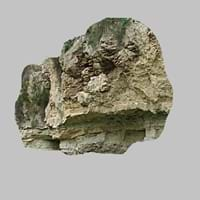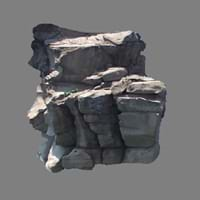Definition
A water-soluble mineral sediment resulting from concentration and crystallization by evaporation from an aqueous solution
Comendite is a hard, peralkaline igneous rock, a type of light blue grey rhyolite
Discoverer
Usiglio
Unknown
Etymology
From a sediment left after the evaporation
Comendite derives its name from the area of Le Commende on San Pietro Island in Italy
Class
Sedimentary Rocks
Igneous Rocks
Sub-Class
Durable Rock, Soft Rock
Durable Rock, Hard Rock
Group
Not Applicable
Volcanic
Other Categories
Coarse Grained Rock, Fine Grained Rock, Medium Grained Rock, Opaque Rock
Medium Grained Rock, Opaque Rock
Texture
Earthy
Porphyritic
Color
Colourless, Green, Grey, Silver, White
Blue, Bluish - Grey
Durability
Durable
Durable
Appearance
Glassy, Vesicular and Foilated
Foliated
Interior Uses
Decorative Aggregates, Entryways, Flooring, Homes, Interior Decoration
Countertops, Decorative Aggregates, Interior Decoration
Exterior Uses
As Building Stone, As Facing Stone, Garden Decoration, Paving Stone
As Building Stone, As Facing Stone, Garden Decoration
Other Architectural Uses
Curbing
Curbing
Construction Industry
As a Flux in the Production of Steel and Pig Iron, As a Sintering Agent in Steel Industry to process Iron Ore, As Dimension Stone, Cement Manufacture, for Road Aggregate, Making natural cement, Manufacture of Magnesium and Dolomite Refractories
Building houses or walls, Cement Manufacture, Construction Aggregate, for Road Aggregate, Landscaping, Making natural cement, Raw material for the manufacture of mortar
Medical Industry
Taken as a Supplement for Calcium or Magnesium
Not Yet Used
Antiquity Uses
Artifacts
Artifacts
Commercial Uses
Used in the manufacture of Ceramic Powder, Used in the preparation of Sulfuric Acid and Silicon Diborite
Cemetery Markers
Types
Not Available
Rhyolite
Features
Generally rough to touch, Splintery, Veined
Very fine grained rock, It is One of the Oldest, Strongest and Hardest Rock
Archaeological Significance
Monuments
Not Yet Used
Not Yet Used
Famous Monuments
Not Applicable
Not Applicable
Sculpture
Not Yet Used
Not Yet Used
Famous Sculptures
Not Applicable
Not Applicable
Pictographs
Used
Not Used
Petroglyphs
Used
Not Used
Figurines
Not Yet Used
Not Yet Used
Formation
Evaporite is water-soluble mineral sediment which forms from concentration and crystallization by evaporation from an aqueous solution.
Comendite is a type of Igneous rock which is formed due to cooling and solidification of lava or magma. It may form with or without crystallization, either below the surface as intrusive rocks or on the surface as extrusive rocks.
Mineral Content
Calcite, Cancrinite, Gypsum, Kyanite, Magnetite
Albite, Amphibole, Quartz
Compound Content
CaMg(CO3)2, CaO, Calcium Sulfate, KCl, MgO, NaCl
Al, Fe, Potassium Oxide
Types of Metamorphism
Burial Metamorphism, Cataclastic Metamorphism, Contact Metamorphism, Impact Metamorphism, Regional Metamorphism
Cataclastic Metamorphism, Regional Metamorphism
Types of Weathering
Not Applicable
Biological Weathering, Chemical Weathering, Mechanical Weathering
Types of Erosion
Not Applicable
Coastal Erosion, Water Erosion
Grain Size
Medium to Fine Coarse Grained
Medium Grained
Fracture
Conchoidal
Pervasive
Streak
White
Bluish Black
Porosity
Less Porous
Highly Porous
Luster
Subvitreous to Dull
Dull
Cleavage
Perfect
Not Available
Toughness
Not Available
2
Specific Gravity
2.86-2.99
2.38
Transparency
Translucent
Opaque
Density
2.8-2.9 g/cm3
Not Available
Specific Heat Capacity
Not Available
Resistance
Heat Resistant, Pressure Resistant
Heat Resistant, Impact Resistant
Deposits in Eastern Continents
Africa
Not Available
East Africa
Europe
United Kingdom
Italy
Others
Not Yet Found
Not Yet Found
Deposits in Western Continents
North America
USA
Not Yet Found
South America
Colombia, Paraguay
Not Yet Found
Deposits in Oceania Continent
Australia
Central Australia, Western Australia
Queensland
Evaporite vs Comendite Characteristics
Though some rocks look identical, they have certain characteristics which distinguish them from others. Characteristics of rocks include texture, appearance, color, fracture, streak, hardness etc. Evaporite vs Comendite characteristics assist us to distinguish and recognize rocks. Also you can check about Properties of Evaporite and Properties of Comendite. Learn more about Evaporite vs Comendite in the next section. The interior uses of Evaporite include Decorative aggregates, Entryways, Flooring, Homes and Interior decoration whereas the interior uses of Comendite include Countertops, Decorative aggregates and Interior decoration. Due to some exceptional properties of Evaporite and Comendite, they have various applications in construction industry. The uses of Evaporite in construction industry include As a flux in the production of steel and pig iron, As a sintering agent in steel industry to process iron ore, As dimension stone, Cement manufacture, For road aggregate, Making natural cement, Manufacture of magnesium and dolomite refractories and that of Comendite include Building houses or walls, Cement manufacture, Construction aggregate, For road aggregate, Landscaping, Making natural cement, Raw material for the manufacture of mortar.
More about Evaporite and Comendite
Here you can know more about Evaporite and Comendite. The life cycle of a rock consists of formation of rock, composition of rock and transformation of rock. The composition of Evaporite and Comendite consists of mineral content and compound content. The mineral content of Evaporite includes Calcite, Cancrinite, Gypsum, Kyanite, Magnetite and mineral content of Comendite includes Albite, Amphibole, Quartz. You can also check out the list of all Sedimentary Rocks. When we have to compare Evaporite vs Comendite, the texture, color and appearance plays an important role in determining the type of rock. Evaporite is available in colourless, green, grey, silver, white colors whereas, Comendite is available in blue, bluish - grey colors. Appearance of Evaporite is Glassy, Vesicular and Foilated and that of Comendite is Foliated. Properties of rock is another aspect for Evaporite vs Comendite. The hardness of Evaporite is 2-3 and that of Comendite is 6-7. The types of Evaporite are Not Available whereas types of Comendite are Rhyolite. Streak of rock is the color of powder produced when it is dragged across an unweathered surface. The streak of Evaporite is white while that of Comendite is bluish black. The specific heat capacity of Evaporite is 0.92 kJ/Kg K and that of Comendite is Not Available. Depending on the properties like hardness, toughness, specific heat capacity, porosity etc., rocks are resistant to heat, wear, impact, etc.Evaporite is heat resistant, pressure resistant whereas Comendite is heat resistant, impact resistant.





